Today we can say that the garden does not mimic the natural environment, but imitates the garden itself, or at least its own particular model that is still undergoing a process of cultural uprooting, in terms of aesthetics. For example, it is no longer surprising to find the perfect Zen garden in the heart of Northern Europe. In this sense is it correct to consider your series Eden as the representation of a representation?
Fabien Seguin (FS): Yes. When you walk in a park, you are among natural elements, but the landscape is a construction that has been planned and designed, based on cultural heritage and representations. Japanese gardens, Chinese gardens, English gardens, there are many models, rules for the landscape designer to follow. Sometimes also parks present a mix of influences, are hybrid compositions. A garden trying to mimic nature is also based on representations, on the idea we have of nature. Whatever comes from us stems from our representations, what the Stoics called “phantasia”. So even if the landscapes of Eden are often devoid of human presence, they are full of us.
Talking about uprooting, if it is quite common nowadays to find a Zen garden in Northern Europe, it is also a commonplace to find European style constructions in Chinese parks: windmills, small fake churches, fake sailing boats… I still haven’t found a French garden in China, but I’m sure there is.
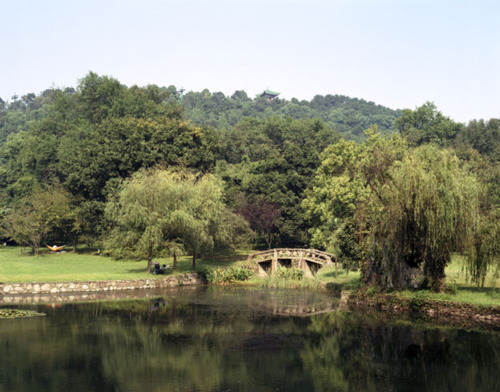
© Fabien Seguin from the series 'Eden'
Some time ago, I had the idea of shooting a new series that I would have called 'The West', focusing on the presence of the representation of Europe in today China. This dreamed Europe exerts a definite influence, especially on architecture, urban planning and real estate advertisement imagery. But I feel this project isn’t really for me. Other photographers, more urban-oriented, should undertake the subject. Richard Rowland already started to work on this in his series Urban Fictions, which is a beginning.
Chinese people commonly see Europe as romantic, steeped in history, full of remarkably old constructions and peaceful – which is partly true. I think that for the Chinese, Europe might be what they have lost, or what they feel they have lost. That could be why they look at it with envy and try to imitate its architecture and styles. It represents an authenticity they miss.
After 5 years in China and for having studied Chinese recent history a bit, it is quite clear that the 20th century was full of political turnarounds and disruptions. It was pretty destructive and fast-paced. Today’s China pace is even faster, old neighborhoods constantly being demolished to leave room for high apartment blocks, bridges, subways… I sometimes compare the urban landscape here to a website: constantly updating, nothing being stable or lasting for very long. In this chaos, the individual feels more vulnerable and lacks something that endures, something that he feels will always be here. That might be why Europe is so influential over imagery and urban design: it is a place where things last. Or maybe I’m wrong and it’s just a matter of fashion.
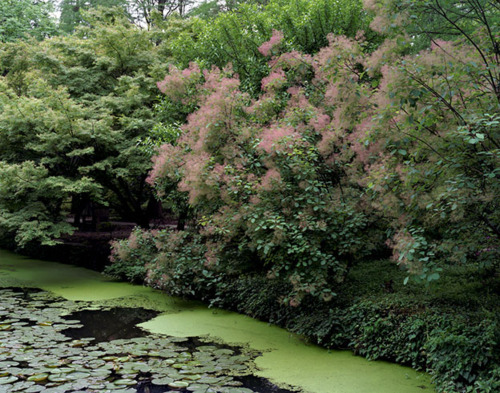
© Fabien Seguin from the series 'Eden'
With regard to the language adopted, the sense of suspension, detachment, and subtly surreal atmosphere that reigns in the gardens portrayed in this series. Is it a precise choice of style or is it something created spontaneously by the very nature of your research?
FS: Detachment is a stylistic choice and perhaps also the result of the use of the large format camera. When I go out to shoot, I’m completely engulfed in what I visually perceive and I don’t want to talk, it’s a kind of meditative state. Many people tell me that my pictures look very peaceful, calm; I guess it’s because it was precisely my state of mind when I was taking them, a state far from everything but the subject, receded from the world somehow. As for the surreal atmosphere, I didn’t really noticed it before, but it’s true that for some shots it is pretty obvious. These places are naturally surreal, and that’s also because they dance on the thin thread of representation. Sometimes they end up looking like landscapes from a fairy tale and you have the impression of walking in a Tim Burton’s movie.
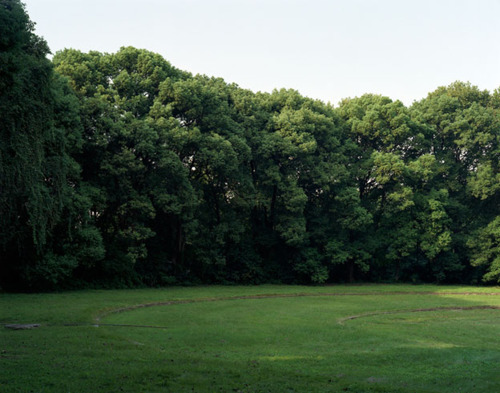
© Fabien Seguin from the series 'Eden'
Right from the title, Eden, this series draws an indefinite and ancient feeling of nostalgia, something that looks like the need to find a state that can never belong to us and that we seem to carry with us as a kind of archetype. Since the research of this utopian harmony with nature ends with the need to find ourselves, some of your shots are “cruel” in their merciless demonstration of the impossibility of such tension to achieve any satisfaction. Where you clear about this critical intent from the beginning, or was it something that you gradually focused on?
FS: From the beginning, Eden seemed like a good title, precisely because this word plays with our representations. Most people in the western world have that image in their head of what we call Eden and also of Paradise. It’s a cultural sediment. Using this title allows me to suggest that this work is not only about the landscape, but also about how our ideas and culture give shape to it, how parks are like microcosms where all of our influences and references are at play.
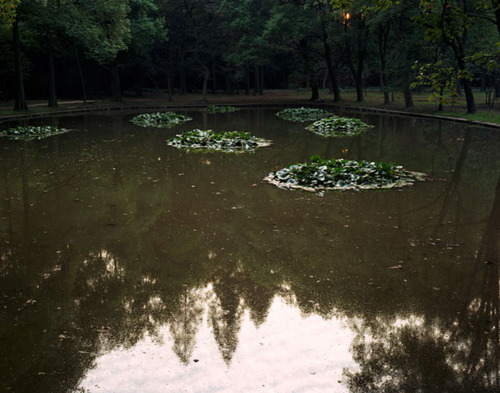
© Fabien Seguin from the series 'Eden'
At the same time this title is a little usurped, in the sense that I was not really influenced by Christian tradition. I’m more of a pagan. I studied the Latin and Greek authors for many years and for me “Eden”, although being a purely Christian term, alludes more to the Golden Age of the Greeks than to Adam and Eve’s original garden, an Age when nature was abundant and supplied men with everything they needed without any labor required from them.
But Eden or Golden Age, it’s all myths and ideas, it’s all literature. What remains is our biological need for nature (see the Biophilia hypothesis and Nature deficit disorder Wikipedia articles), and it may be this need that prompted us to create these stories as we were living in ever more crowded cities, where food was not naturally abundant, where we had to work to survive and where we couldn’t be in touch with nature as often as before. I think that is the source of the nostalgia you are talking about. Once you understand that, the feeling goes away. Remains only our physical need of being surrounded by nature.
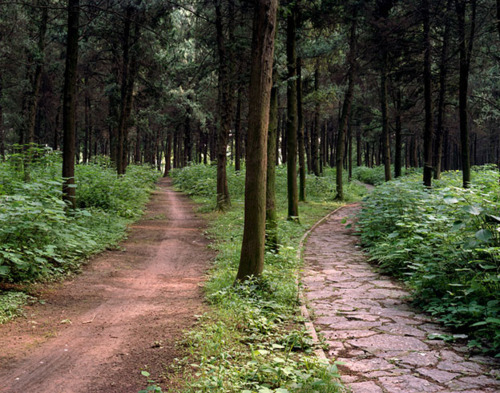
© Fabien Seguin from the series 'Eden'
Nature, while alluring, continues to scare us. Your series Under the leavespresents shots permeated by a dark and mysterious ambience, and seems to dig in anxiety that’s never calmed, that may come from the certainty of not being able to completely subdue nature. Something similar to the metaphorical representation of the failure of man as ruler of the world. This could be one of the many interpretations of your project?
FS: In Under the Leaves, I side with vegetation. I try to forget the human and give a voice to vegetation, a presence. I’m sometimes tired of being human, dealing and playing with words, culture, images, knowledge and everything related to accumulation. Sometimes you wish you could make all that disappear and go to the desert or become a pure presence, still, untroubled, almost self-sufficient, only growing slowly, like a tree or a bush. I have been deeply influenced by ancient philosophers like Pyrrho, the Cynics, Epicurus and Lucretius. I think you could say they are my real masters.
So the dark atmosphere of this work is not really aimed at representing the anxiety of man unable to subdue nature, it intends to represent what is here but that we cannot see: the presence of vegetation, its very own way of living, its very archaic conscience, that we cannot even start to fathom. We are too fast creatures.
Darkness is a way to convey mystery, to suggest that there is something going on here that we have no idea about. It represents our ignorance. But it’s also here to embody the potential menace of a nature that we mistreat and ignore too often. One day it may start to take revenge. I like the idea that nature is much more resilient than us and knows better than we do how to defend itself. But we cannot sit back and try to put this idea to the test. It would lead to extremities nobody wants to face.
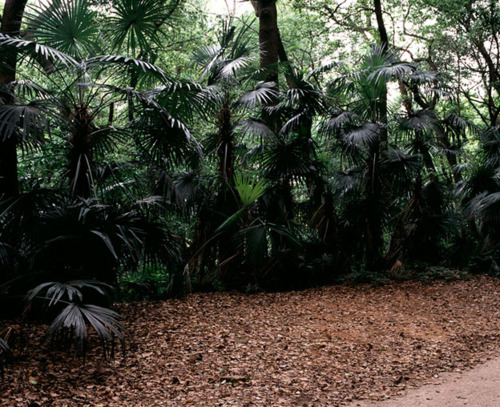
© Fabien Seguin from the series 'Under the Leaves'
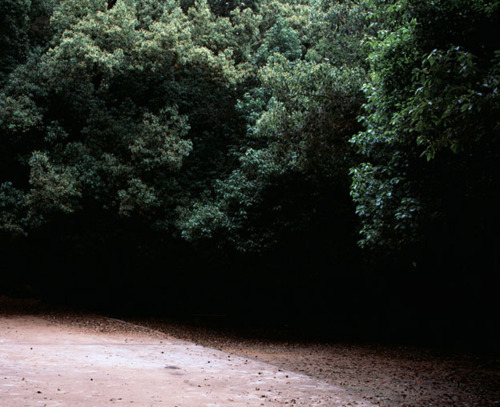
© Fabien Seguin from the series 'Under the Leaves'
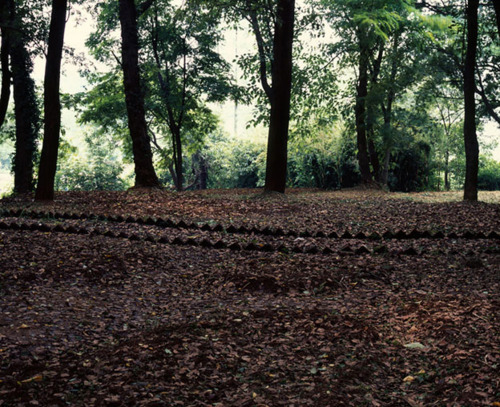
© Fabien Seguin from the series 'Under the Leaves'
The desire to seek your own personal aesthetic and to identify a precise language appears very clear. Without necessarily having to talk about models in photography, what are your main references?
FS: Like numerous photographers interested in landscape, I was influenced by the work of Joel Meyerovitz, Joel Sternfeld and Stephen Shore. After starting my Eden project, I discovered the New Pictures from Paradise by Thomas Struth, which is a great series, very inspiring. You cannot get in the pictures because they are so dense… I love this feeling of being overwhelmed by an image, of not being able to master it, to get through it. Also related to vegetation, Peter Bialobrzeski Paradise Now is an equally brilliant work. Among younger photographers, I particularly keep an eye on Daniel Shea, Dalton Rooney, Matthieu Gafsou and Phil Underdown, who all deal with landscape and nature in their own way. Movies by David Lynch and Apichatpong Weerasethakul, among others, are also important references for me.»
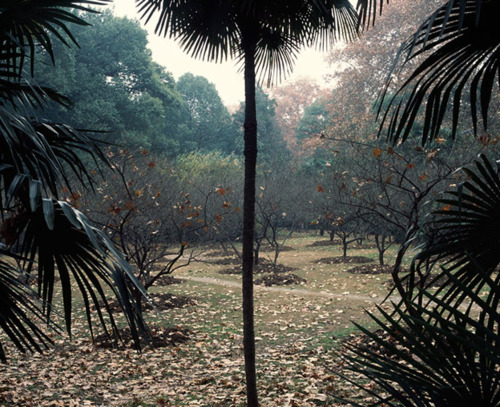
© Fabien Seguin from the series 'Under the Leaves'
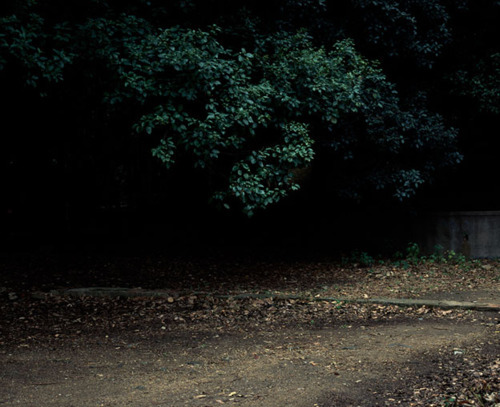
© Fabien Seguin from the series 'Under the Leaves'
---
LINKS
Fabien Seguin
France
share this page